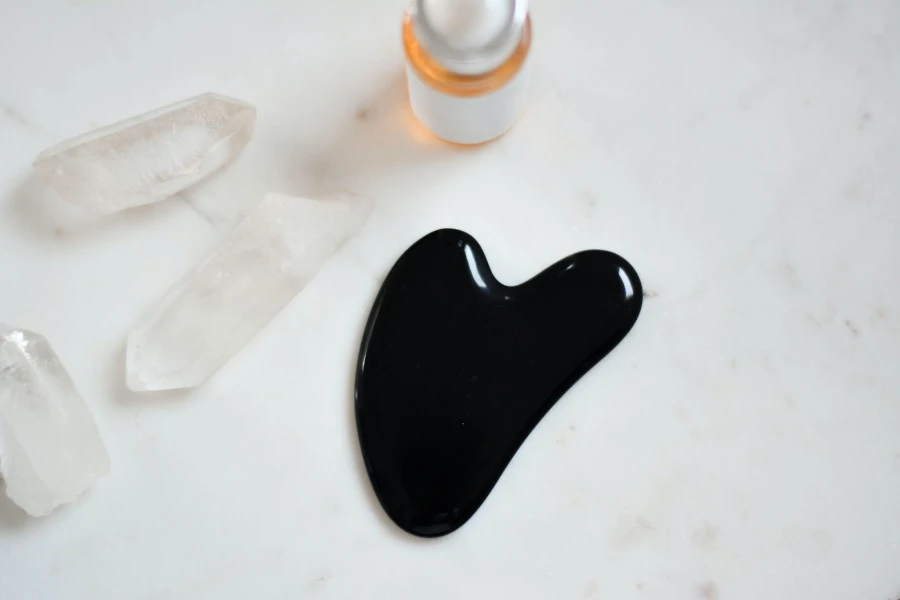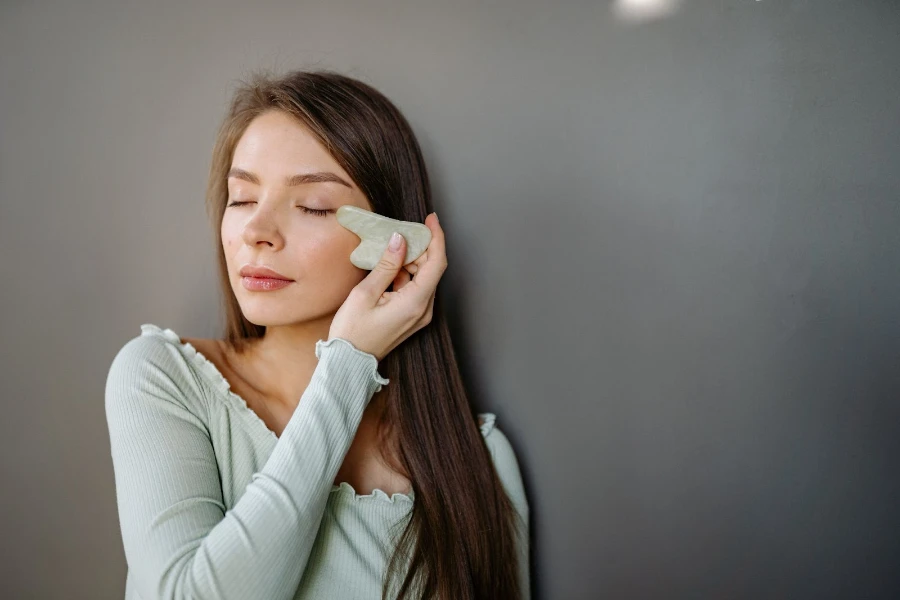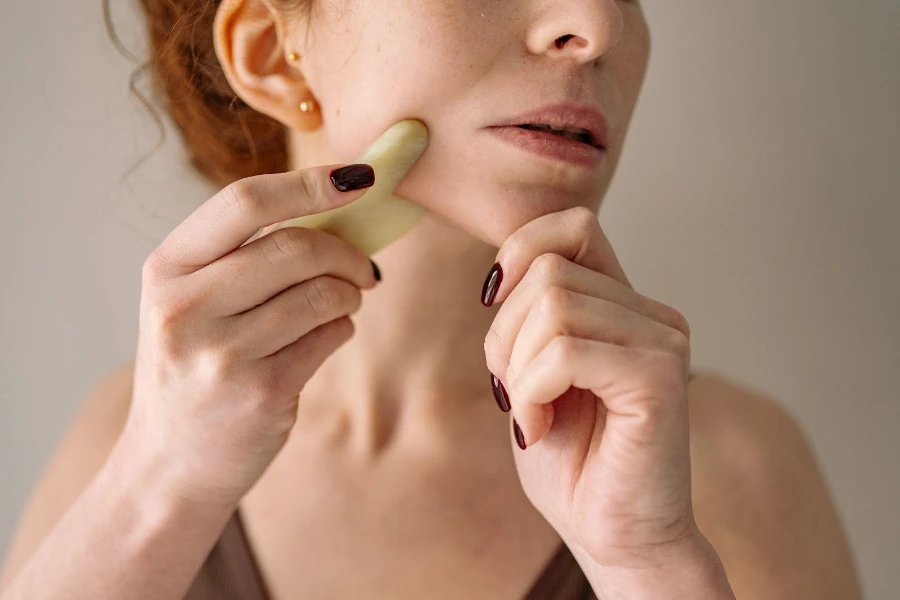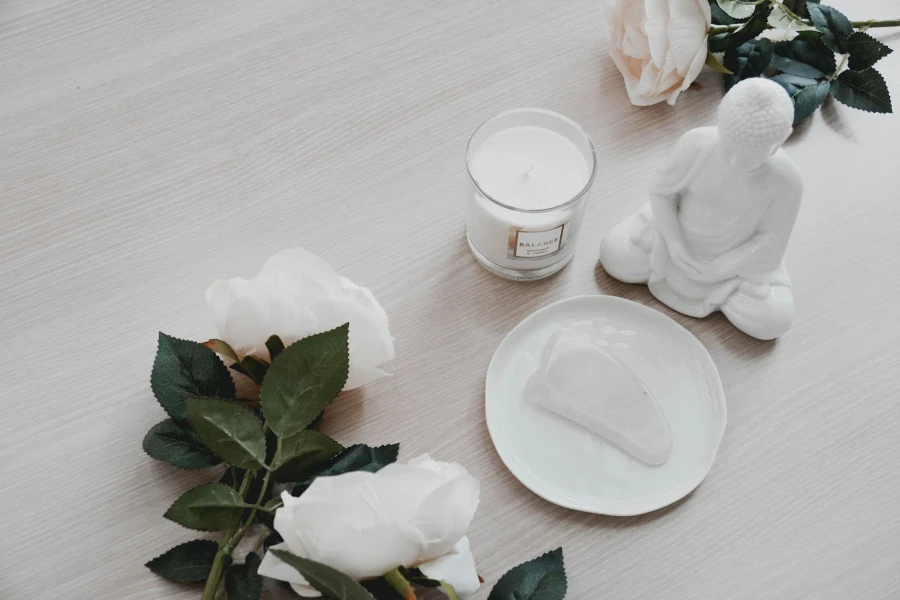Gua sha is a popular tool to relieve inflammation and sculpt the face. Interest in gua sha has grown over the past year, with 168,000 searches in the past month. Gua sha would be ideal for consumers to experience anti-aging and face-sculpting benefits.
Table of Contents
What is gua sha?
Gua sha benefits
Gua sha side effects
How consumers can use gua sha
Gua sha tools
Conclusion
What is gua sha?

Gua sha is a traditional Chinese medicine technique to gently scrape the skin using a tool. Gua sha has been used by practitioners to relieve pain in the body. Now, gua sha tools are available for consumers for home wellness practices to relieve tension and reduce puffiness in the face.
Gua sha benefits

A facial gua sha can provide numerous benefits to consumers when used regularly and consistently. Some of these are:
Anti-aging: Gua sha stimulates blood flow to the face, which helps to reduce fine lines and wrinkles and improve the skin texture. Furthermore, gua sha can stimulate collagen production to give the skin a youthful glow.
Face sculpting: Gua sha can reduce inflammation and puffiness to slim the face. When used on the jawline and cheekbones, gua sha can release tension in the facial muscles and give the face a more sculpted appearance. Furthermore, gua sha can lift the eyebrows and eye area.
Under-eye area: Gua sha improves blood circulation, and when used on the under-eye area, it can reduce puffiness, eye bags, and dark circles.
Acne: Consumers with acne-prone skin have clogged pores, and gua sha can unclog pores and gently exfoliate the skin, resulting in clearer skin.
Neck: Gua sha can relieve neck tension and reduce signs of aging, including fine lines and sagging.
Gua sha side effects
Even though gua sha has many benefits, there are several side effects consumers should be aware of, including:
Pain: Gua sha should not be painful but gentle and comfortable on the skin. However, too much pressure can cause redness and pain, making the face swell and sensitive to touch. Gua sha will not tug at the skin and cause pain when used correctly.
Breakouts: Even though gua sha is used to clear the skin, the first 2–3 weeks of using a gua sha tool can cause breakouts. Gua sha increases blood flow and removes impurities, which can bring a build-up of oil to the skin’s surface. However, the breakouts are only temporary. Afterward, the face will be clearer with consistent use of gua sha.
Fillers: If consumers recently had Botox or fillers, they should not use gua sha for a few weeks as gua sha can move fillers underneath the skin.
How consumers can use gua sha

For best results, consumers should use gua sha 3–4 times a week for 10–15 minutes, either in their morning or evening skincare routine. Consumers can then build up to daily use. Gua sha should be used after cleansing the skin and applying a moisturizer or facial oil. The face should be moisturized for the gua sha tool to glide across the skin. After moisturizing the face, the gua sha should be washed with warm water to remove residue and bacteria.
Gua sha tools

Gua sha facial tools are available in different shapes and materials that consumers can use.
Shapes
Dolphin-shaped: The dolphin is the most common shape of gua sha. The shape is great to use on the face, underneath the eyes, on cheekbones, and on the jawline.
Wing-shaped: This gua sha resembles a bird wing with three small arches. The gua sha is great for larger areas of the face, including the chin, jawline, and forehead, to reduce fine lines.
S-shaped: The gua sha looks like an S and is perfect for sensitive areas of the face and neck to provide targeted results.
Square-shaped: The gua sha looks like a square with two notches. The gua sha is ideal for the jawline and hard-to-reach areas of the face like the brow bone, forehead, cheekbones, and under the eyes.
Heart-shaped: The gua sha looks like a heart, and it helps lift and sculpt cheekbones, tighten the jawline, and relax facial muscles.
Wave-shaped: The gua sha has a wave-shaped design on the side, making it versatile for use on the face and neck.
Materials
Jade: Jade is the most commonly used material for gua sha stones. The jade comes in either green, pink, or white, and the jade is known as a cooling stone. Jade is a smooth stone and easily glides across the skin.
Rose quartz: Rose quartz is the second most common material for gua sha. The pink stone is calming and ideal for sensitive or reactive skin, including rosacea and acne.
Amethyst: Amethyst is a purple stone that has a cooling effect on the skin. Amethyst helps release muscle tension and improves the skin’s appearance.
Bian: Bian is the material most commonly used in China for gua sha. The bian stone helps improve blood circulation.
Stainless steel: Stainless steel is a great option for gua sha as it does not easily break or crack like other gua sha stones. Stainless steel is also easier to clean and sterilize than typical stones.
Wooden: Wooden gua sha is less common than gua sha stones or stainless steel. The wooden gua sha is smooth on the skin but can be more difficult to clean. Additionally, wooden gua sha tools can crack and splinter over time.
Conclusion
Regardless of the shape and material, gua sha is an effective tool with numerous benefits. From anti-aging and face sculpting to clearer skin and tension relief, consumers can incorporate gua sha into their self-care routine and experience the benefits of the highly popular facial technique. To explore the range of gua sha options, head to Alibaba.com.




